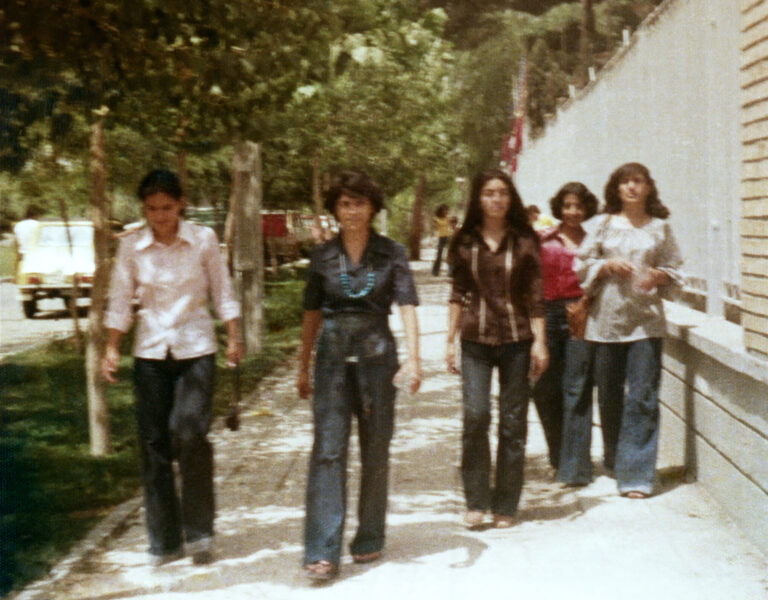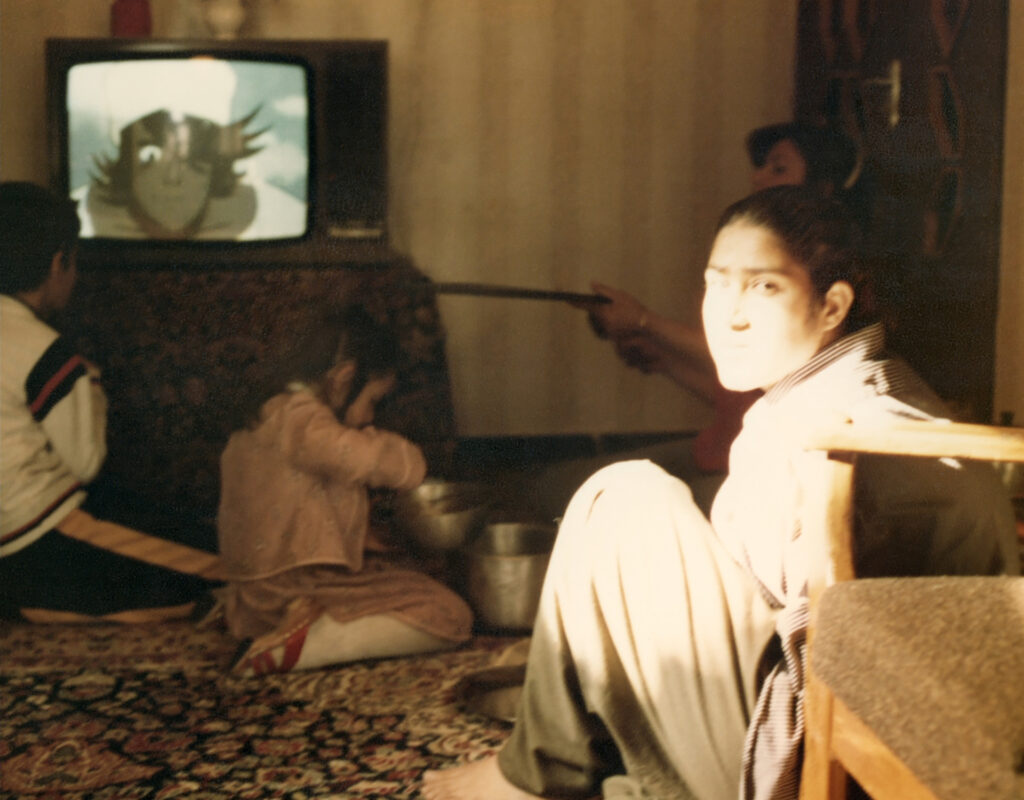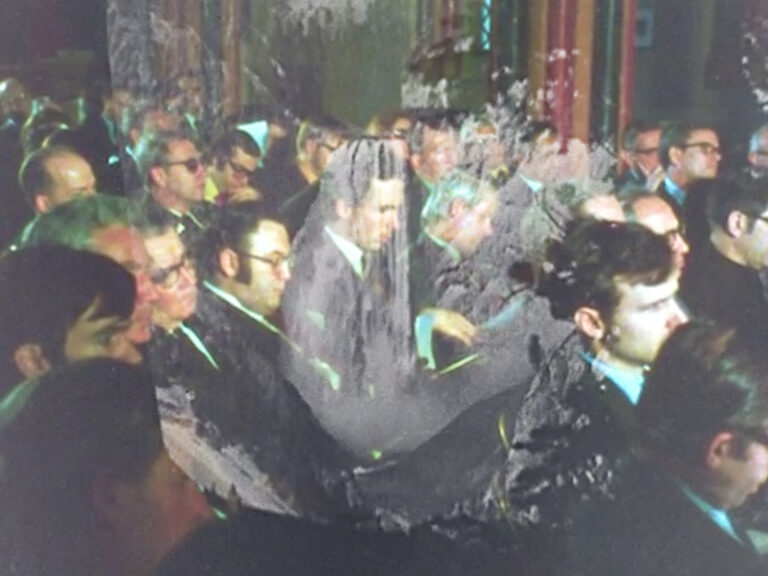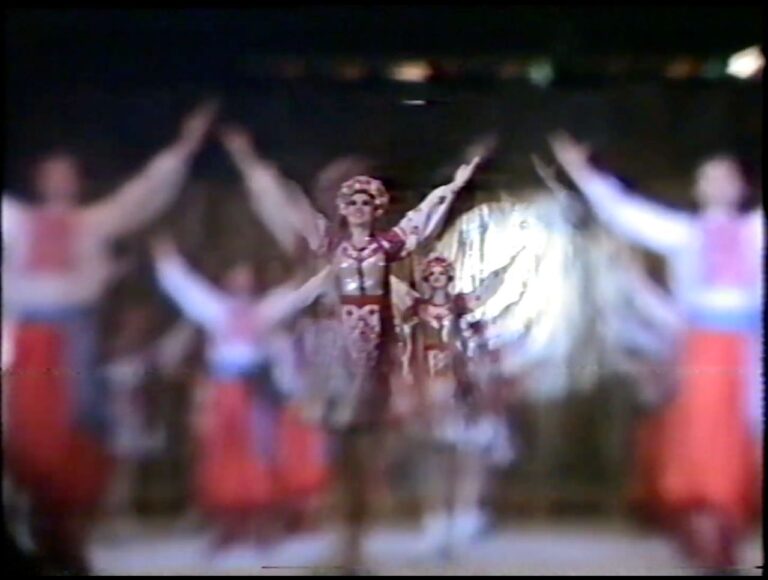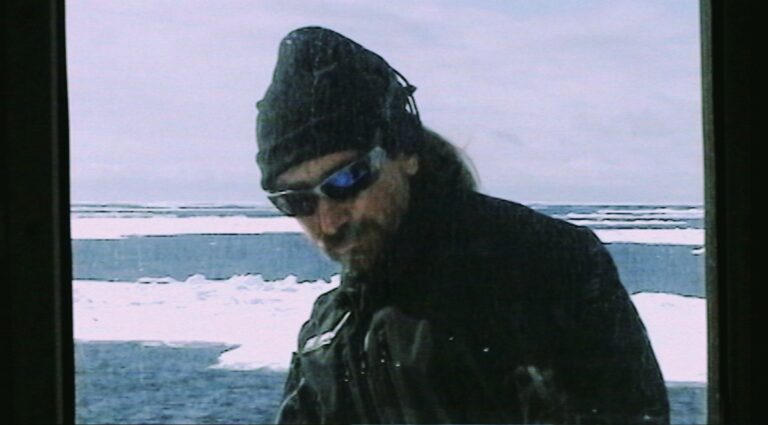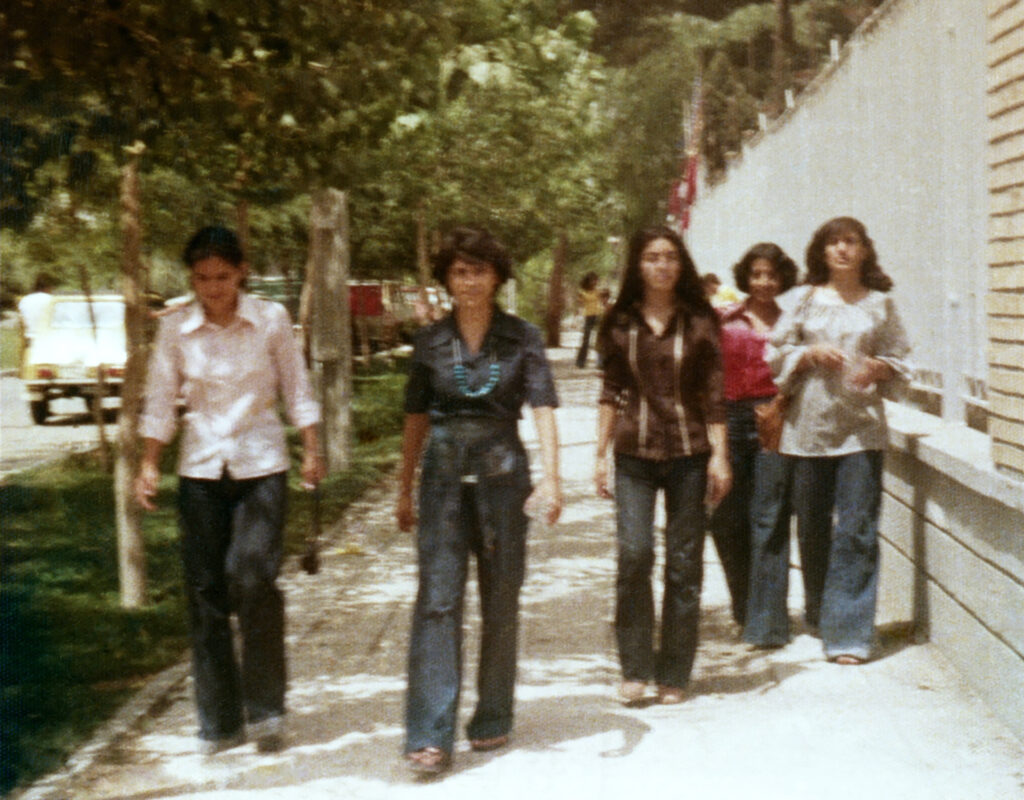
Through a collage of personal archive footage and photographs, the history emerges of a small, metaphorical city where all the streets are named after poets. The town’s psychogeography defines the mental and emotional state of its inhabitants, who live in a utopian illusion founded on poetry.
When the system changes and war begins, new neighbourhoods emerge to accommodate the refugees, and the existing street names are replaced by new ones. Abrupt and sweeping upheavals lead to confusion among the city’s residents, who soon find themselves lost amid the memories of the forgotten poets.
«The idea for City of Poets started with a mulberry tree, planted by my grandmother in the garden of her house. That tree presented me with domesticity, happiness, belonging, and a sense of wisdom. My grandmother also had a strong connection to it; she always talked to it, sang to it and danced in front of it. Once the tree was gone, it felt as if she had died again.
The absence of the tree brought me to my memories of my grandmother’s house and how it was the first shelter for my family after becoming refugees of war. Then my mind moved to the alley where the house was located, and then I thought of the city, where all the streets were named after poets. As a four-year-old, I knew many poets’ names.
City of Poets is a chain of images, just like the daisy chain of memories I based the story on. Each frame gives birth to the next and motivates another image to appear. I have composed the structural transition of the city through fragmentary memories that are told by the voice-over, addressing the essential aspect of oral history: as something that is not fixed and made up of different sources and voices, without specific hierarchy, repeated and changed ever so slightly. In City of Poets, the town’s psychogeography defines the mental and emotional state of its inhabitants, a small group of people living in a utopian illusion founded on poetry. And because the place is not named, the changes and confusion can trigger personal stories and memories in the viewer.»
— Sara Rajaei
Information
Country
The NetherlandsYear
2024Length
21'22"
Category
ExperimentalOrigin of archival materials
The list of the archive involved: images from the archives of: Fardid Khadem, Majid Kazemi, Sara Rajaei.Screenplay
Sara RajaeiEditing
Nathalie Alonso CasaleProduction
near/by filmDirector’s biography
Sara Rajaei is an Iranian-Dutch video artist and filmmaker based in The Netherlands. In her work, she studies the notion of time by reflecting on the absence of image, memory psychology, oral history, narrative techniques, and physical/psychological space. Her artistic oeuvre consists of short films and video installations, which remain between storytelling and imagery.
